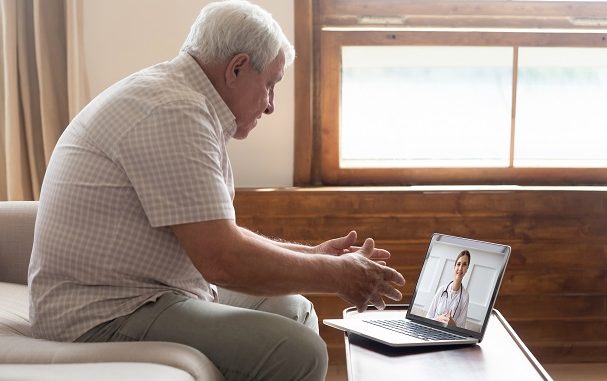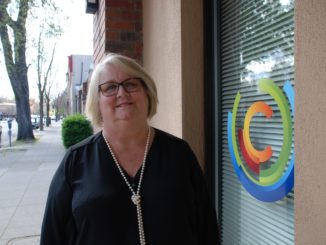
When coronavirus took hold in California over late winter and early spring, Adam Aaronson had a better sense than many Chicoans for how the pandemic would reshape lives.
Aaronson, a marriage and family therapist in private practice, monitored developments as the number of cases climbed in the state and worldwide, even while Butte County remained relatively unaffected. Mid-March, Aaronson closed his office on Rio Lindo Avenue and transitioned to teletherapy sessions.
The next week, on March 19, Gov. Gavin Newsom issued the stay-at-home order that halted all in-person counseling. More than that, the de facto quarantine left people—many out of work, with children distance-learning at home—suddenly confined in stressful circumstances.
With videoconferencing already a part of his electronic health record system, Aaronson had experience connecting with patients remotely. Other practitioners, notably those at the Butte County Department of Behavioral Health, faced more radical reinvention just as their patients and neighbors hit crisis points.
“It was about what I was expecting,” Aaronson told the CN&R by phone. “I mean, I wasn’t really prepared to deal with a global pandemic, quite frankly, so I didn’t have a ton of expectations. I was watching it from afar going, ‘Gosh, I wonder what’s going to happen?’
“Then, when the shutdown happened here, I knew something was going to happen—I just didn’t realize the gravity of the action that was going to take place.”
In speaking with patients, along with family and friends, Aaronson found a common thread: anxiety. They have felt—and feel—strong senses of dread and instability, regardless of whether there was a preexisting mental health diagnosis.
People are “extra anxious” about “all of the unknowns we still face,” he continued, “and [are] overwhelmed about their future, their jobs, their immediate worlds, and globally what this world is going to look like and what this all means.”
Anxiety and loss of control can magnify certain mental illnesses. As such, the stay-at-home order has exacerbated some conditions such as schizophrenia, with intensified symptoms of paranoia and delusion, and made treatment more complicated.
County Behavioral Health sees many such patients. The department operates the inpatient psychiatric unit and provides care for low-income individuals in a rural area where many have government-subsidized health coverage. Outpatient services span prevention, wellness and recovery, including substance abuse, with separate programs for youth and adults, and the department serves residents with an array of diagnoses—many with multiple diagnoses as well as addictions.
“The quarantine caused a lot of challenges for people,” Behavioral Health Director Scott Kennelly said during a recent phone interview.
“You had people whose entire daily routines were disrupted. A lot of people experienced a significant increase in stress; others initially took a brief period of [respite] but we realized that didn’t last very long. After the initial phase of calm, we started to see more domestic violence situations, increased substance abuse. With the increased stress, we saw more anxiety and depression in people—and if you had a preexisting mental health condition, it typically got worse.
“It seemed like everything got turned on its head,” he added.
The governor’s orders forced Behavioral Health to suspend face-to-face appointments immediately, though the inpatient facility remains open.
“A lot of our patients were used to in-person services,” he continued, “where they’d come into clinics to see their therapists or psychiatrists, or they’d come into our wellness centers to meet with their peers or support groups. All of a sudden, all of those services changed overnight.”
Behavioral Health, as Aaronson had done, switched to telemedicine except for extraordinary circumstances, such as a crisis or medical necessity to evaluate in person.
Some patients adjusted better than others. Kennelly said that teens and young adults took to online video “like it was nothing” while some older patients felt uncomfortable with the technology and connected via phone. Contacting those without stable housing proved challenging, as distancing rules preclude much of the outreach Behavioral Health normally conducts.
In Aaronson’s practice, some clients decided to wait until he returns to the office to resume counseling, but most have given online appointments a try. Those who’ve flourished and those who’ve struggled with it “didn’t narrow down to a diagnostic specificity,” he said. “It was just personality.”
Aaronson, who moved to Chico in 2014, worked as a Behavioral Health therapist for two years before joining a group practice. He’s set up his own therapy space with intentionality—relatively small and sparsely decorated.
“It’s kind of like a container,” he described. “We don’t have that container any more. Therapy exists in the world, just like they exist in the world.” Clients call in from their cars, or offices after co-workers leave, “because that’s the only private space they have,” Aaronson continued.
“There’s kids in the back, or dogs barking; there’s my dogs barking. And then people feel a little bit more comfortable because they’re not in my office, so sometimes people are smoking when I’m talking to them. I had someone chewing tobacco when I was talking to them.”
As a result, he says that body language—a key component of communication—may get lost.
The technology shift has yielded an unexpected benefit for Behavioral Health, however. With support groups unable to convene, peer counselors created online meetings. Kennelly said the effort has been so successful, drawing participants from other counties as well as Butte, that the department plans to continue online peer support post-coronavirus.
Telemedicine, too, has been a boon: “We’ve had clients who historically have had a problem getting to appointments face-to-face,” Kennelly said, due to issues such as transportation or childcare, “but they can log in at home at an agreed-upon time and see their counselor.”
These new modes will prove significant as Behavioral Health braces for financial hits. Kennelly says the department will suffer a $5.5 million cut under the proposed state budget. Since that money draws federal matching funds, the total loss is $11 million, almost 14 percent of Behavioral Health’s $80 million budget.
“Where we’re at right now is we’re shifting,” Kennelly said. “We’re beginning to reopen our doors for scheduled appointments, but with a lot of safety precautions in place. We think we’ll have a combination [of in-person and online now].
“Our role [in July],” he added, “is to really start talking about how we will be in our physical building and come on in if you need some help. Things we’ll be different—we’ll be wearing masks and we’ll be social distancing—but we definitely will be back up for business.”




Be the first to comment